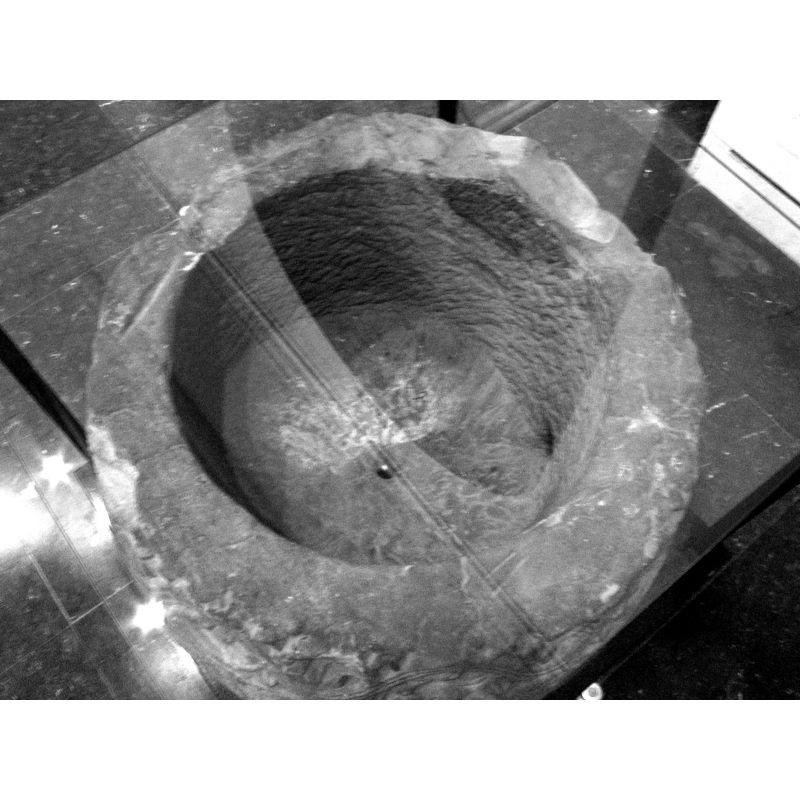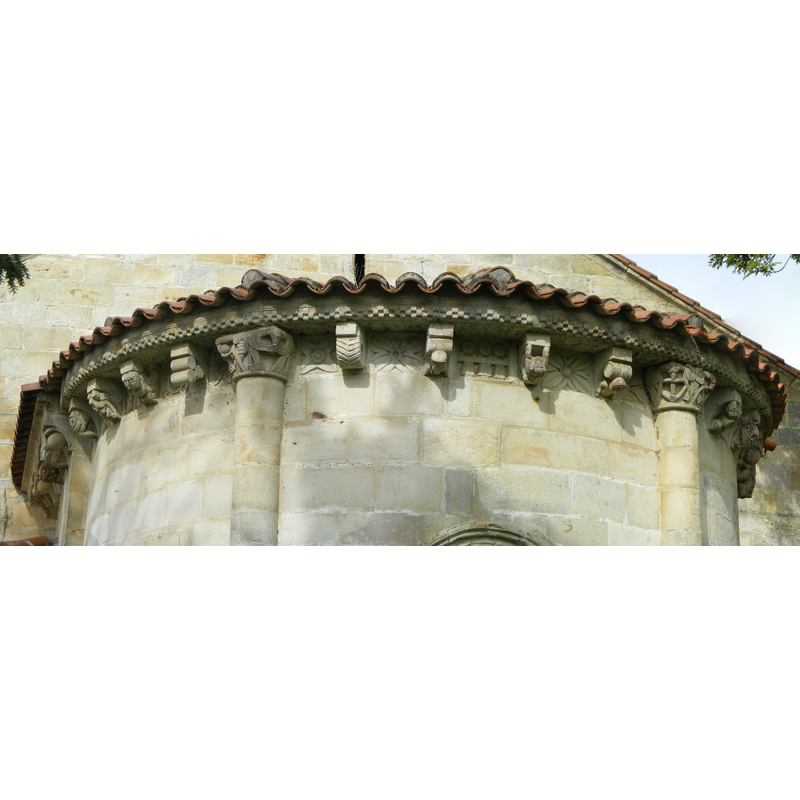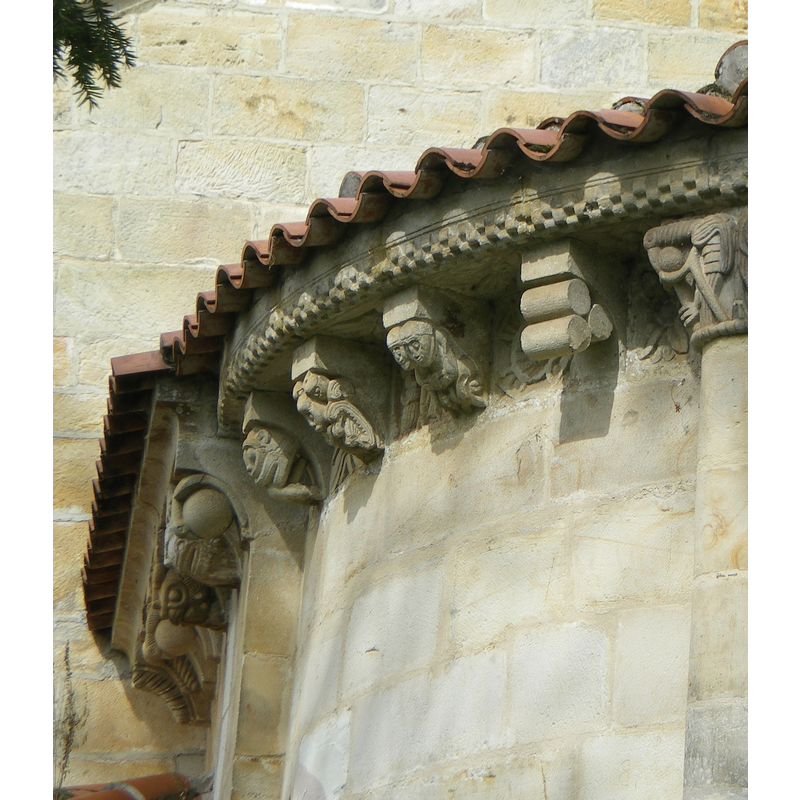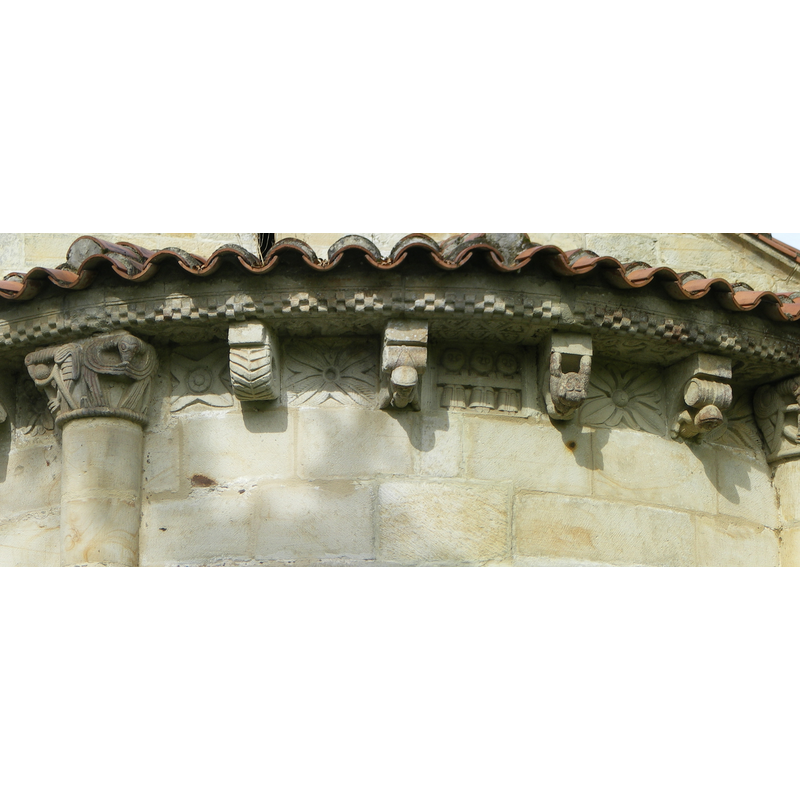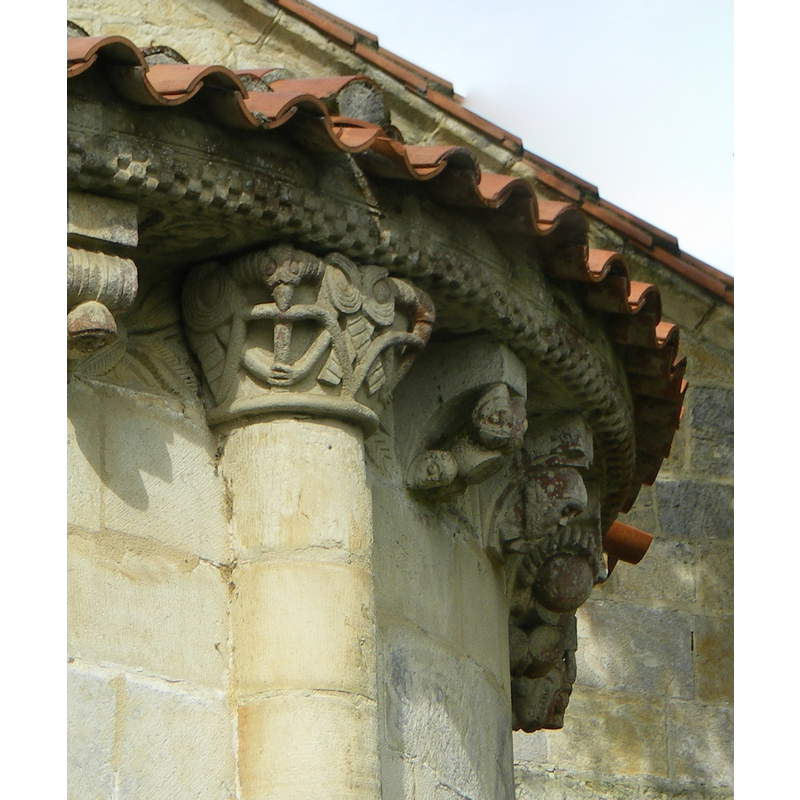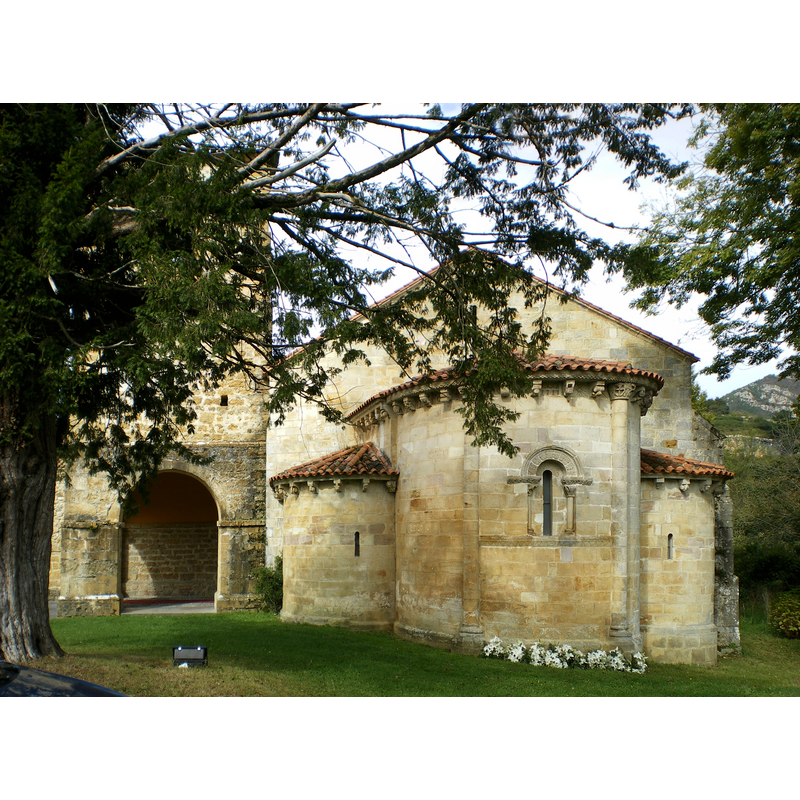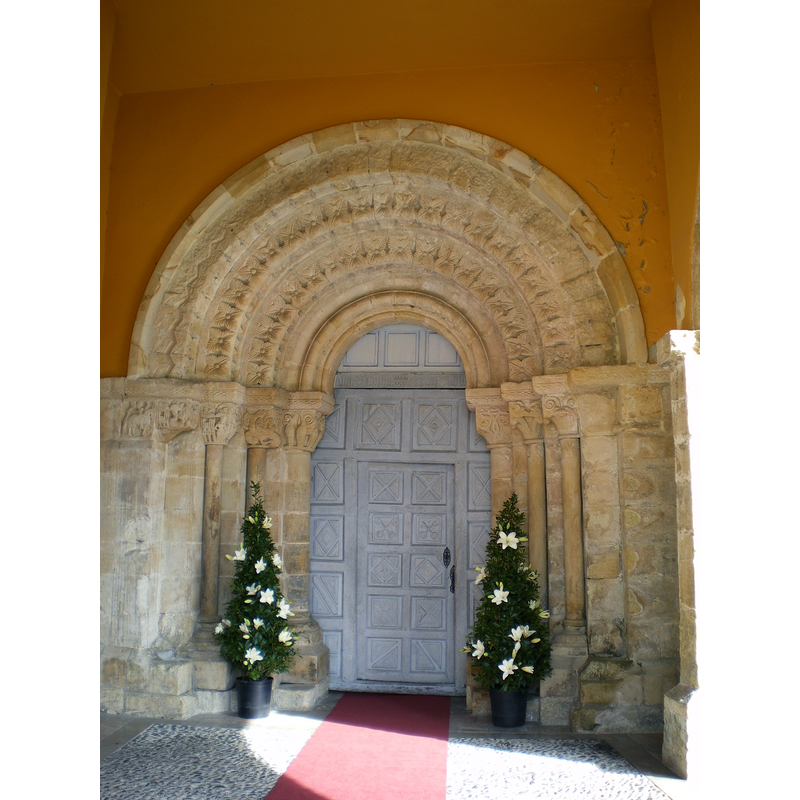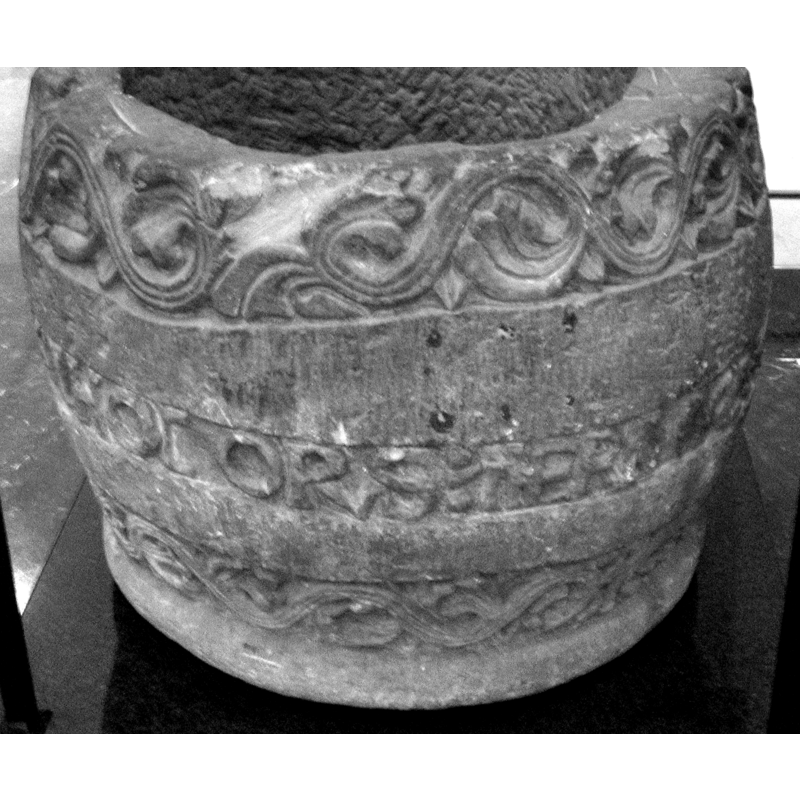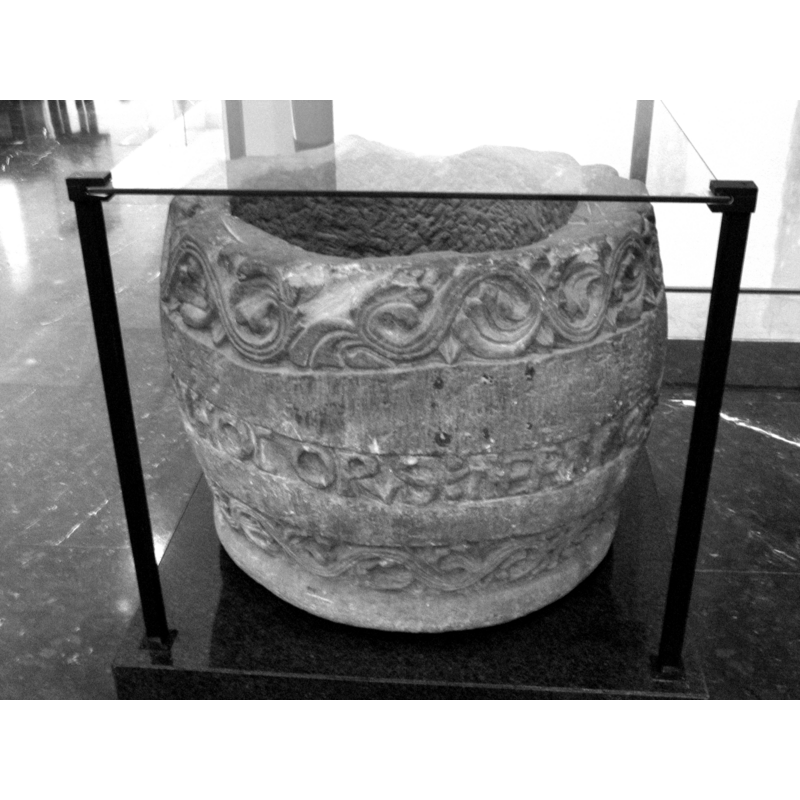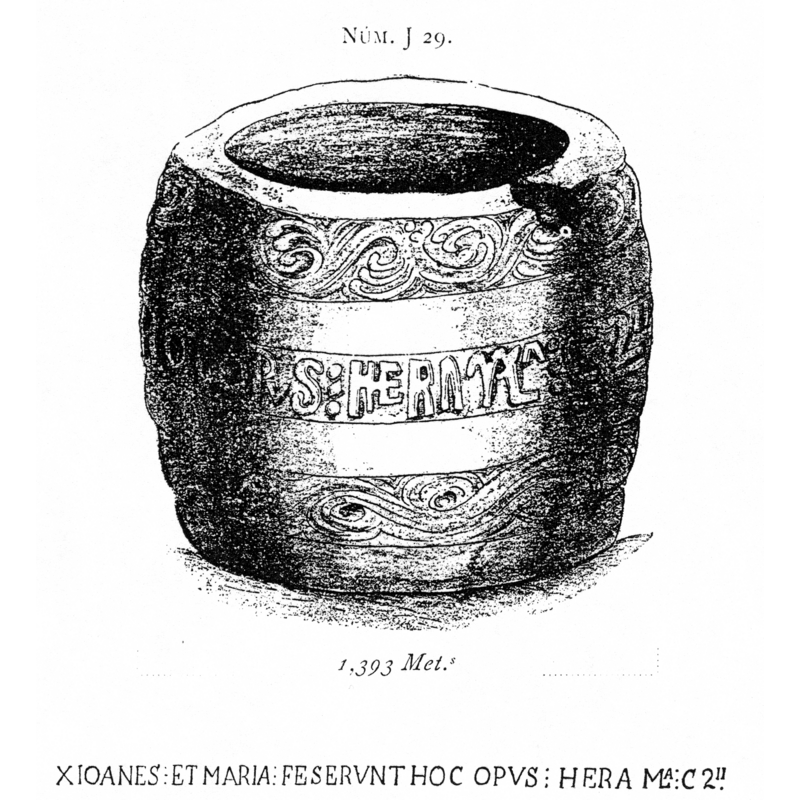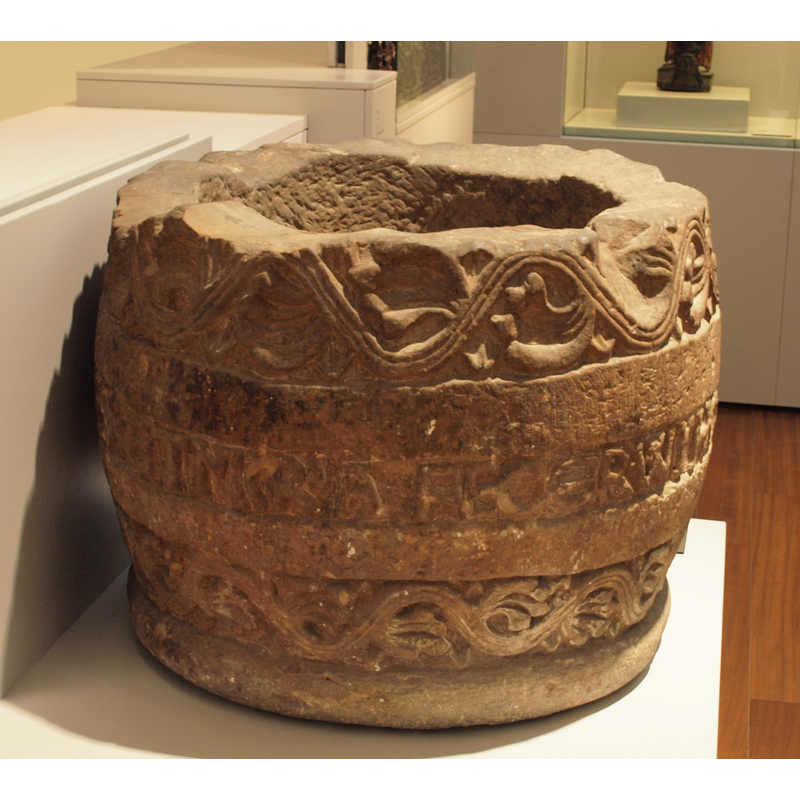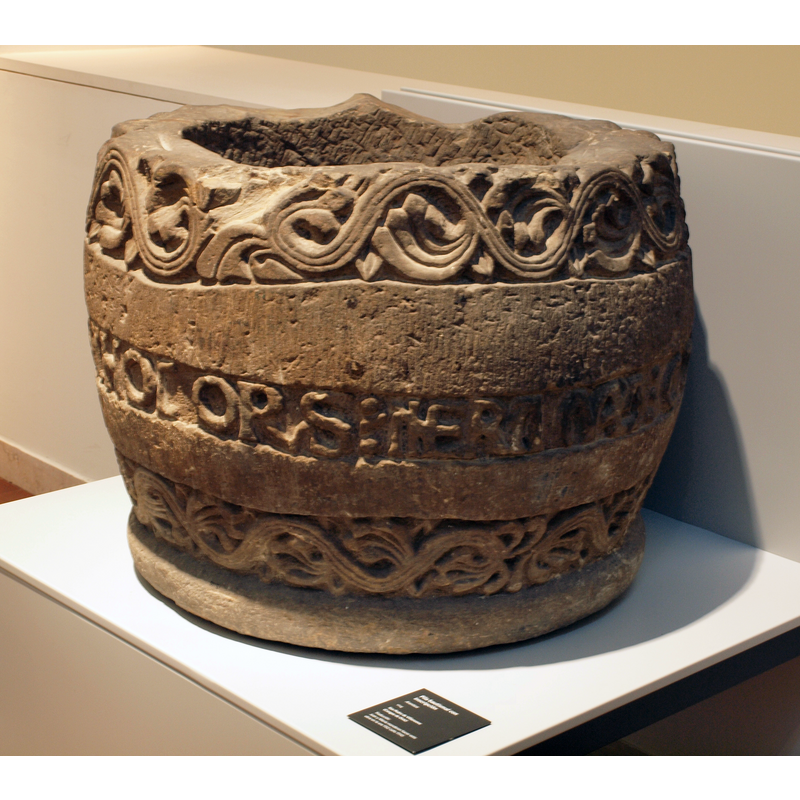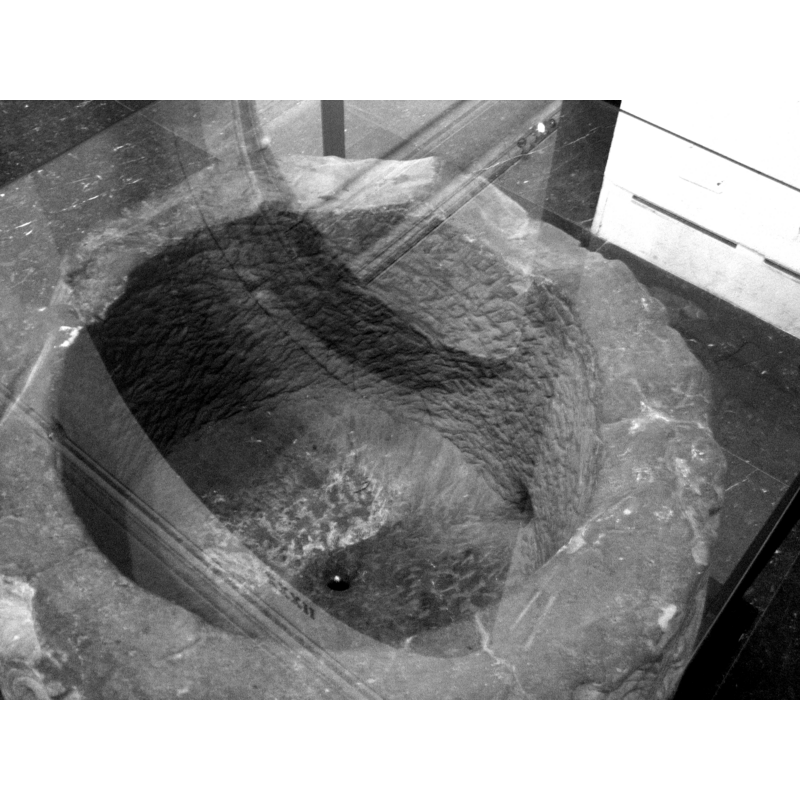Villanueva de Cangas de Onis / Villanueva de Cangas de Onís / San Pedro de Villanueva
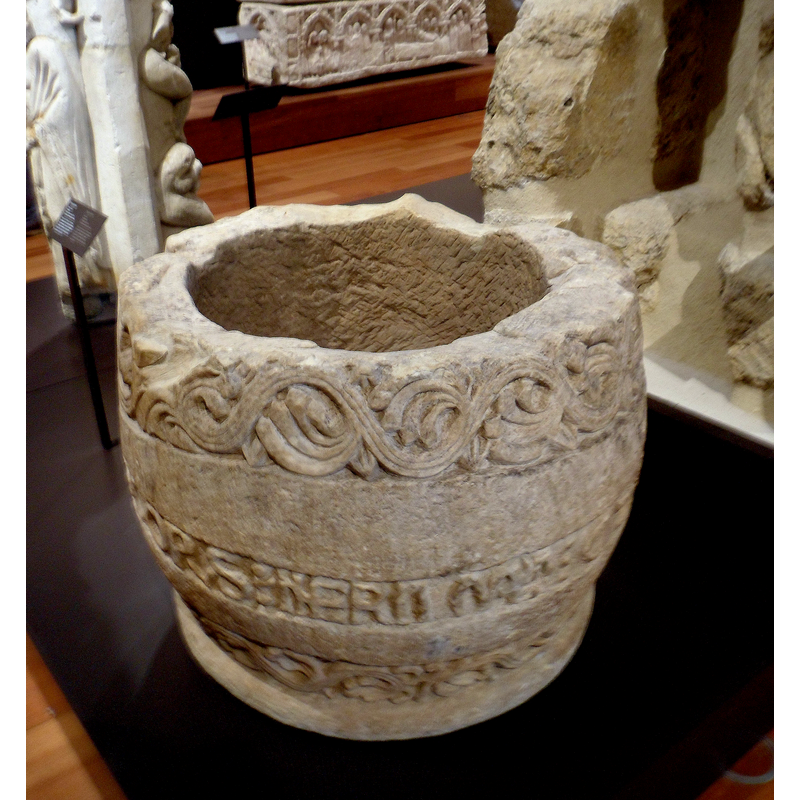
Image copyright © Francisco José García Gómez, 2015
Image and permission received (e-mail of 25 April 2015)
Results: 21 records
B01: inscription - detail
BBL01: design element - motifs - foliage scroll or garland - acanthus
BBU01: design element - motifs - foliage scroll or garland - acanthus
information
view of basin - detail
view of basin - detail
view of basin - interior
view of church exterior - east side - corbel
view of church exterior - east side - corbel
view of church exterior - east side - corbel
view of church exterior - east view
view of church exterior - portal
view of font
view of font
view of font
view of font
view of font
view of font
view of font - upper view
view of font in context
Scene Description: notice the carving pattern on the inside of the font
Copyright Statement: Image copyright © Francisco José García Gómez, 2015
Image Source: digital photograph taken 25 April 2013 by Francisco José García Gómez
Copyright Instructions: Image and permission received (e-mail of 25 April 2015)
INFORMATION
FontID: 02249VIL
Object Type: Baptismal Font1
Museum and Inventory Number: from 1868 to March 2011 in the Museo Arqueológico Nacional (Madrid, Spain) -- moved to the Museo Arqueológico de Asturias (Oviedo, Spain) on temporary loan in March 2011]
Church/Chapel: [originally from the Iglesia Parroquial de Santa María de Villanueva; later moved to the Monasterio y Parroquia de San Pedro de Villanueva; it was donated to the M.A.N in 1868]
Church Patron Saints: St. Mary the Virgin [St. Peter]
Church Location: Villanueva de Cangas de Onís s/n, 33550 Cangas de Onís
Country Name: Spain
Location: Asturias, Principado de Asturias
Directions to Site: The original monastery and the village of Villanueva are located off the N-625, near Arriendas, 2 kms NW of Cangas de Onís
Font Location in Church: [in a museum since 1868]
Date: 1114
Century and Period: 12th century (early), Romanesque
Cognate Fonts: Fonts of the "barrel-shaped" type are not uncommon throughout Europe, even in the French baptisteries of the south east. Of a related type are the fonts found in Gramedo en Cabranes, Lillo, Puelles and Priesca, the last ones in the area around Villaviciosa.
Credit and Acknowledgements: We are grateful to Mikel Unanue for the photographs of this font, and for gathering local information on this font in Oviedo, Spain; we are also grateful to Francisco José García Gómez for his photograph of this font
Church Notes: Benedictine monastery originally founded by Alfonso I el Catolico in the 8th century; dissolved in 1835, now a hotel, but the church itself is still in use
Font Notes:
Click to view
There is an engraving of this font, made probably ca. 1900, that shows a large hole at the bottom of the basin, approximately under the word IOHAN[n]ES of the inscription; the making of such a hole would be consistent with the use of the vessel as a rain trough at some point. A report to the Real Academia de Historia dated in Madrid, 29 March 1907 and signed Julián Suárez Inclán (Boletín... , p. 339), the author informs that this font was collected by Antonio Cortés, of Cangas de Onís, who sent it to Madrid, where it is kept. Described and illustrated in Miguel Vigil (1987 c1887). Described and illustrated in Viñayo González (1987 c1979) as a monolithic barrel-shaped stone font originally at the Benedictine monastery of San Pedro de Villanueva until the dissolution of 1835, but now [ca. 1987] in the Museo Arqueologico Nacional in Madrid; the basin is ornamented with a band of deeply-carved vine-like vegetation at top and bottom of its sides, while two other plain bands sandwich the inscription [cf. Inscription area] that runs around the centre part. Abbad (1941) describes it as being almost cylindrical with a widening at the centre, of sandstone and divided into five bands of ornamentation: the upper and lower ones have a garland of typical Romanesque leaves; the next two bands are blank; the central one carries the inscription. The font had been at the Museo Arqueológico Nacional in Madrid [inventory no. 50181] since its arrival on 9 October 1868; the donor was recorded as Antonio Cortés y Llanos [source: Spain. Ministerio de Cultura [http://ceres.mcu.es] [accessed 15 December 2011]. Monolithic sandstone barrel-shaped font originaly from the church of the monastery of San Pedro de Villanueva; the upper rim of the basin is broken off; below it, a running inscription [cf. infra] between two bands of acanthus; at the very bottom, a thick roll moulding. Studied in Bilbao (1998) who points out its similarity with the early fonts made of wood. Described and illustrated in Ruiz de la Peña (2002); this author -quoting J. Manzanares [see AuthorNotes below]- informs that the font was moved in 1684 from the Iglesia Parroquial de Santa María de Villanueva to the new church of the Monasterio de San Pedro. In 1738 the new abbot, Fr. Miguel Fernández, had a new baptismal font made for this church and the old one ended up abandoned in a corner of the cloister. An engraving was made by Vicente Arviol in the mid-19th century for the Comisión Provincial de Monumentos. Soon after, a local person, Antonio Cortés, moved it into his own home until he made a donation of it to the Museo Arqueológico Nacional ca. 1870 [cf. supra]. Described and illustrated in García de Castro (1995), who, based on the date inscribed on the font, 1114 A.D. [Era 1152], argues that it should be considered a milestone as the last of the barrel-shaped font type, the last extant example in the area. The font is now [December 2011] in the Museo Arqueologico de Asturias, in Oviedo [NB: a local informant communicated that the font had been on a temporary loan from the M.A.N. of Madrid since March of 2011; it was not known the precise date of the future return of the font to Madrid, and there was talk of an attempt to keep it in Asturias been in the works]. The accompanying label in the Museo Arqueologico de Asturias reads: Baptismal font; sandstone; date 1114 [Era 1152]; from San Pedro de Villanueva (Cangas de Onís); inscription translates: "Juan y Maria mandaron hacer esta obra en la era 1152 (año 1114)" [=Juan and Maria made in Era 1152 (A.D. 1114)] [NB: the inscription reads "FECERVNT", which would more commonly translate simply as 'made', rather than 'had it made' or 'ordered it made', as the Spanish translation suggests, even though the meaning is most likely the latter. The sponsorship, rather than the authorship proper, of art works is sometimes indicated in medieval Latin by the expression 'fecerunt fieri' -or 'fieri fecerunt'-, to underline the intermediary role of the persons/s named, as apposed to the one indicating the actual agent, the artesan/artist: e.g.: The font at Landewednack has an inscription that reads"[...] D. Ric. Bolham me fecit", whereas the font at Orford has: "Orate pro animabus John Cokerel et Katerine uxoris ejus qui istam fontem in honore dei fecerunt fieri"].
COORDINATES
Church Latitude & Longitude Decimal: 43.366389, -5.151389
Church Latitude & Longitude DMS: 43° 21′ 59″ N, 5° 9′ 5″ W
UTM: 30T 325687 4803751
MEDIUM AND MEASUREMENTS
Material: stone, sandstone
Number of Pieces: one
Font Shape: barrel-shaped (unmounted)
Basin Interior Shape: round
Basin Exterior Shape: round
Drainage Notes: A big hole breaks through the lower band of ornament right down to the the bottom rim and may be part of the drainage system; alternatively this lower cut may have been made later if the font had been used as a trough
Rim Thickness: 8 cm / 6 cm*
Diameter (inside rim): 58 - 61cm [calculated
Diameter (includes rim): 74-77 cm / 75 cm*
Basin Depth: 42 cm
Height of Basin Side: 60-63 cm
Basin Total Height: 60-63 cm
Font Height (less Plinth): 60-63 cm / 63 cm*
Notes on Measurements: Abbad (1941) gives 74 x 60 cm, presumably width x height. Bilbao (1998: 162) gives 75 x 63; Ruiz de la Peña (2002: 192) -quoting from J. Manzanares (1955: 35)- gives 62 cm height, 77 cm outer diameter, 42 cm depth of the well, 8 cm of rim thickness. Miguel Vigil has the max. diam. at 139.3 cm. * [Spain. Ministerio de Cultura [http://ceres.mcu.es] [accessed 15 December 2011]]
INSCRIPTION
Inscription Language: Latin
Inscription Notes: The ERA [i.e., Era Cristiana] date of 1152 corresponds to A.D. 1114. Abbad gives a slightly different text with the second name as "NNCRIA", which he transcribes as perhaps "Naceria". Miguel Vigil gives no source for the transcription. [cf. FontNotes]
Inscription Location: around the middle of the basin
Inscription Text: "+IOHA[N]NES: ET MARIA FECERVNT HOC OPVS: IN ERA MILA: CL II"
the museum's transcription: "IOANES : ET MARIA FECERUNT HOC OPUS : IN ERA MLA:CLII"
Miguel Vigil: "+ IOANES ET MARIA FESERUNT HOC OPUS HERA ML.a CLII."
English translation: "JOHN AND MARY MADE THIS WORK IN ERA [christiana] 1152 [=A.D. 1114]" [BSI translation]. [Abbad gives not MARIA but NACERIA]
Inscription Source: Miguel Vigil (1987 c1887: 311); Viñayo González (1987: 196); Abbad (1941: 314); Bilbao (1998: 165) reproduces the transcription by Rodrigo Amador de los Ríos for the M.A.N.; Ruiz de la Peña (2000: 191 and fn 535)
LID INFORMATION
Notes: some of the damage at the upper rim may be due to the old metal staples of the original cover
REFERENCES
Abbad, Francisco, "Pilas bautismales románicas", t. 14, no. 45, Archivo Español de Arte, 1941, pp. 313-315; p. 314
Alvarez Martínez, María Soledad, El románico en Asturias, Gijón: Ediciones Trea, 1999
Bilbao López, Garbiñe, "La pila bautismal románica de San Pedro de Villanueva (Asturias)", t. XVI, 1-2, Boletín del Museo Arqueológico Nacional, 1998, pp. 161-166; p. 161-166
García de Castro Valdés, César, Arqueología cristiana de la alta Edad Media en Asturias, Oviedo: Real Instituto de Estudios Asturianos, 1995
Miguel Vigil, Ciriaco, Asturias monumental, epigráfica y diiplomática: datos para la historia de la provincia, Oviedo: Principado de Asturias, Consejería de Educación, Cultura y Deportes, Servicio de Publicaciones, 1987
Múñiz López, Iván, "La pila bautismal de tradición prerrománica de Castrillón (Asturias): el control señorial del bautismo", 2 (2007), Territorio, sociedad y poder, 2007, pp. 265-274; p. 273
Ruiz de la Peña González, Isabel, Arquitectura religiosa medieval en el espacio oriental de Asturias (siglos XII-XVI), Oviedo: Real Instituto de Estudios Asturianos, 2000
Viñayo González, Antonio, León y Asturias: Oviedo, León, Zamora y Salamanca, Madrid: Ediciones Encuentro, 1987, c1979
![[cf. Inscription area]](/static-50478a99ec6f36a15d6234548c59f63da52304e5/compressed/1111215006_compressed.png)
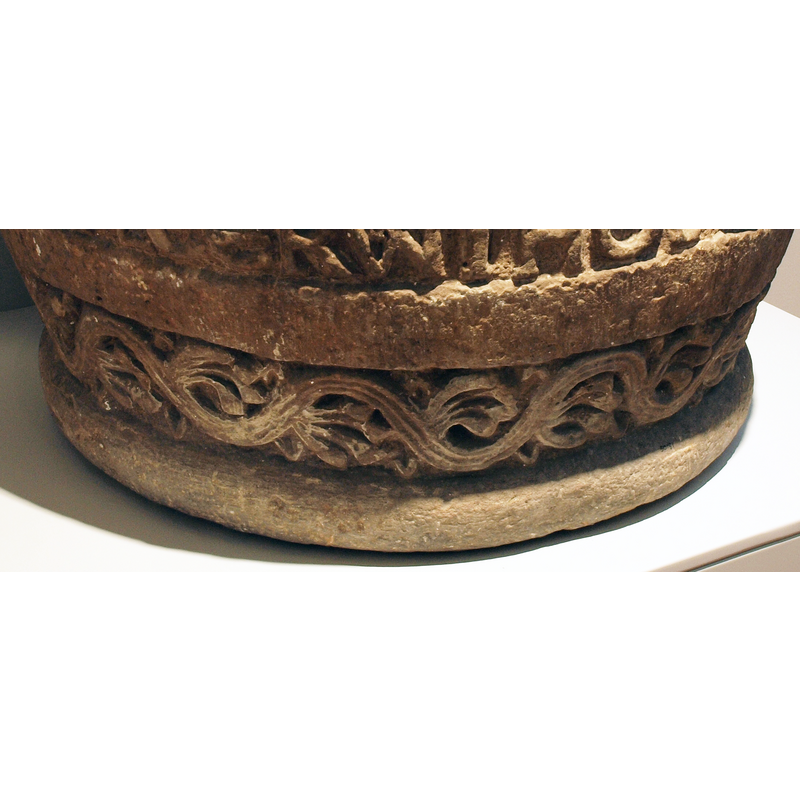
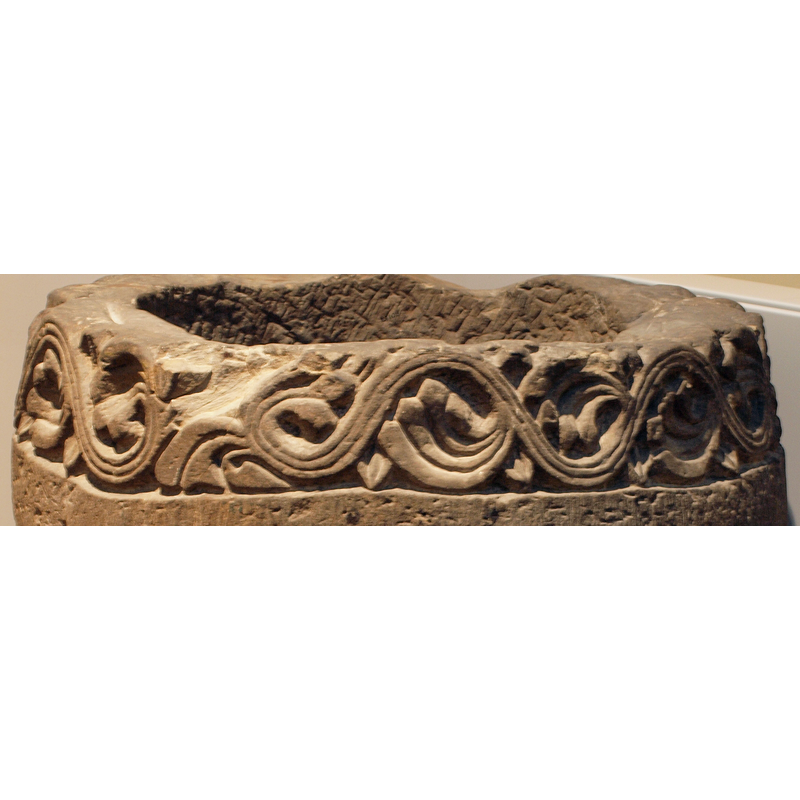
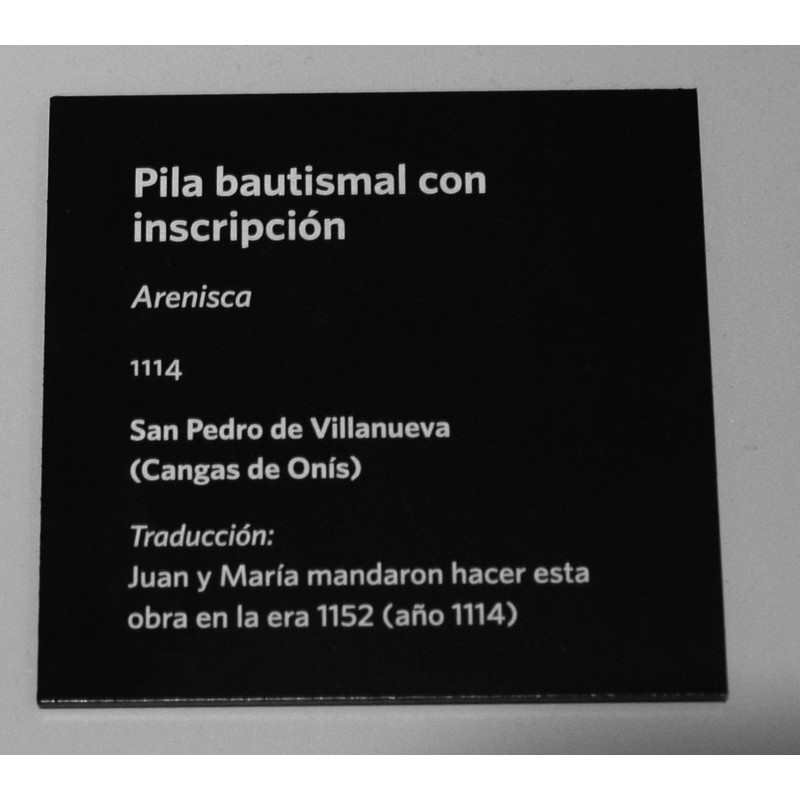
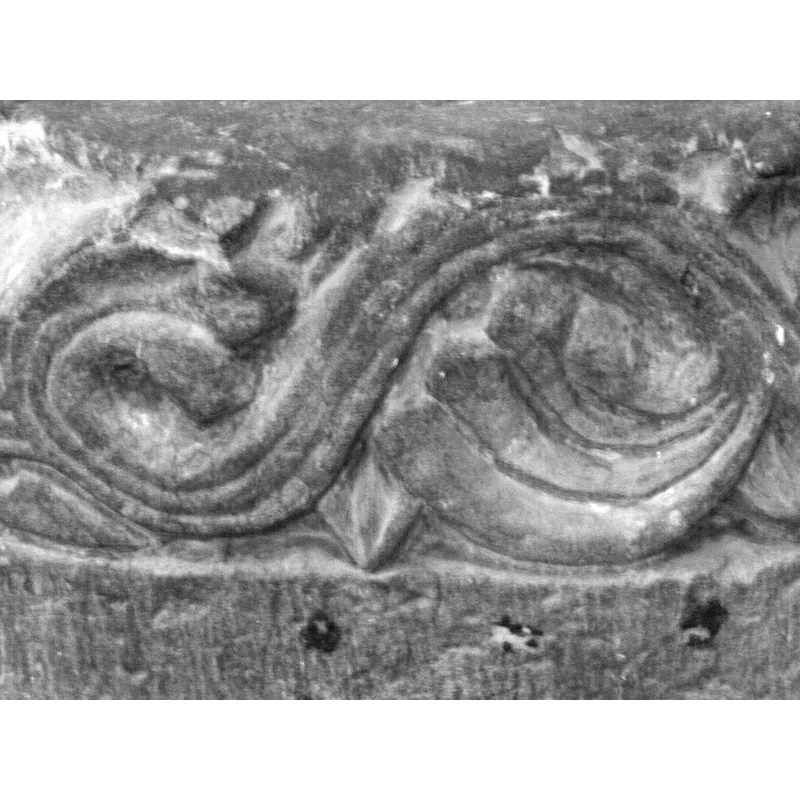
![detail of the lower rim of the basin: drainage channel? [cf. FontNotes]](/static-50478a99ec6f36a15d6234548c59f63da52304e5/compressed/1051118065_compressed.png)
